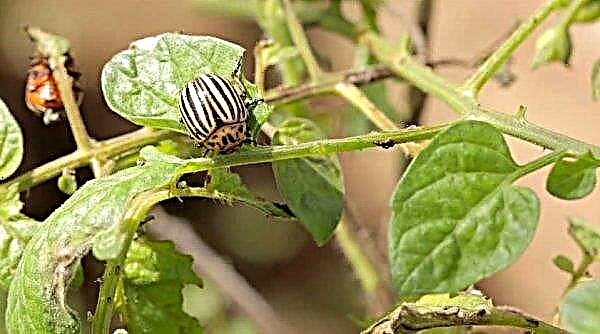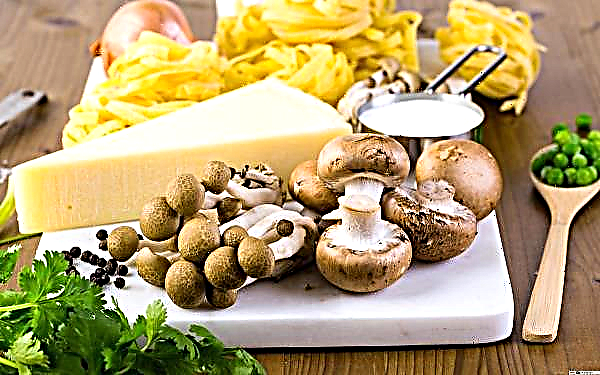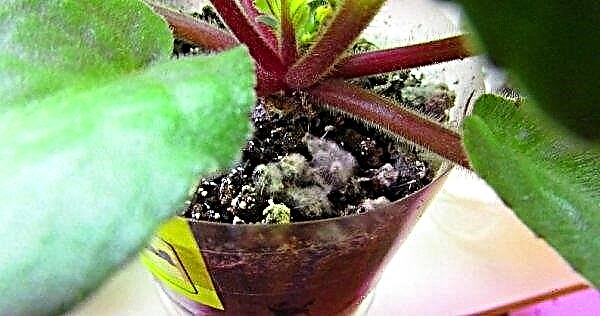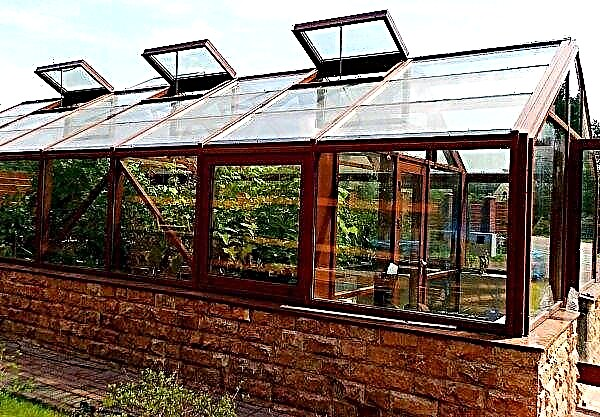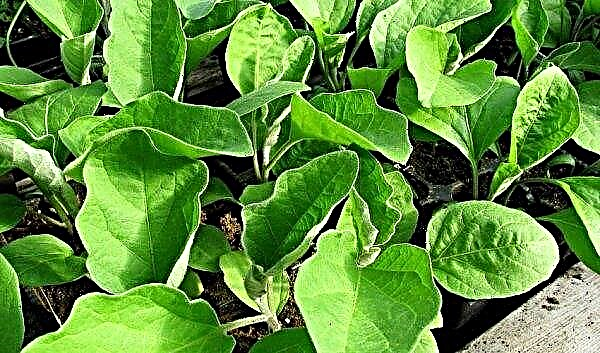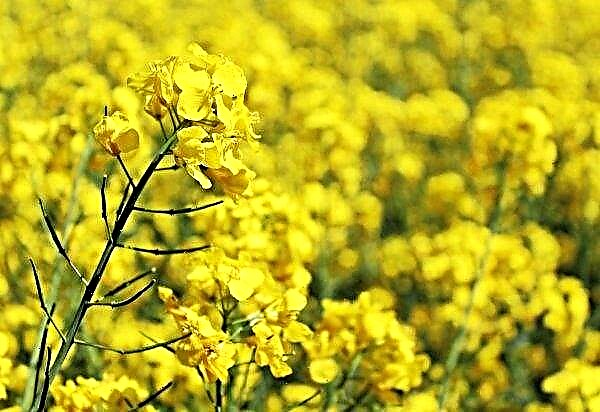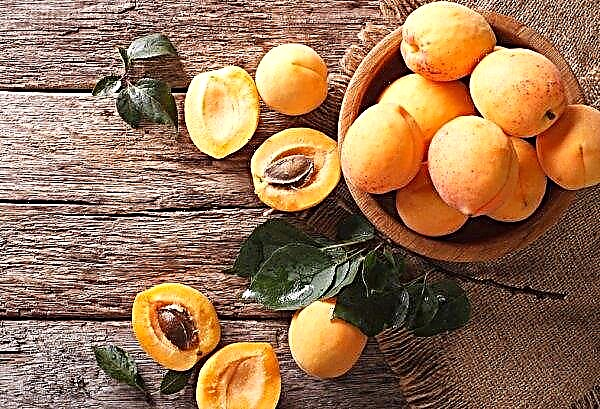Growing tomatoes in a greenhouse, a gardener may encounter yellowing and twisting of plant foliage. This article discusses in detail this problem, the causes of its occurrence and methods of solution.
Why do tomato leaves curl in a greenhouse, and what should I do about it
Inexperienced gardeners often come up with the question: what exactly does the foliage of tomatoes wither and curl from in the greenhouse. There are many factors that affect a problem. The main one is errors in leaving.
Many growers neglect the simplest rules (for example, they forget to disinfect seeds and soil before sowing). Mistakes are made in the selection of varieties of culture. What to process, the gardener chooses himself. It can be potassium permanganate or aloe juice. The soil is decontaminated by freezing or calcining.
Important! For the greenhouse, you need to select the varieties that are resistant to diseases that are designed specifically for this method of growing.
Disease is neglected by preventive treatments, and many bacterial and viral infections are not treatable. The information below will help to avoid the most frequent mistakes in growing crops.
Video: Why tomato leaves curl
Wrong watering
Tomatoes are moisture-loving plants. Watering is rarely necessary, but in large portions. For a greenhouse, it will be optimal to water 4-5 liters of water under a bush 2 times a week. During the flowering period, the rate is reduced to 3 l, in the fruiting stage they are again increased.
An important method of watering: drip (or drip-subsoil). For a large area, it is advisable to build it yourself or buy a watering system in a garden store. In small rooms, plastic bottles or watering cans act as droppers.
Did you know? Cosmetic companies drew attention to the beneficial properties of tomatoes. Based on fruits, skin, hair and nail care products are created.
Lack or excess of fertilizer
Deviations from the norm of development can provoke feeding: their lack or excess.
The lower green will fade, mainly due to lack of nutrition:
- nitrogen - affects the growth of greenery;
- potassium - promotes plant resistance to external factors;
- phosphorus - responsible for the development of roots;
- zinc - controls the absorption of phosphorus and metabolic processes;
- magnesium - is responsible for the process of photosynthesis;
- Molybdenum - promotes the absorption of nitrogen, is responsible for the production of chlorophyll.
Problems in the upper part of the greenery indicate a lack of other components.
The following are what these components are and what everyone is responsible for:
- boron - pollination and fertilization, protein metabolism;
- iron - nutrition of cells, the formation of coloring pigments;
- sulfur - amino acid biosynthesis;
- calcium - disease resistance, root development;
- Manganese - metabolic processes in tissues.
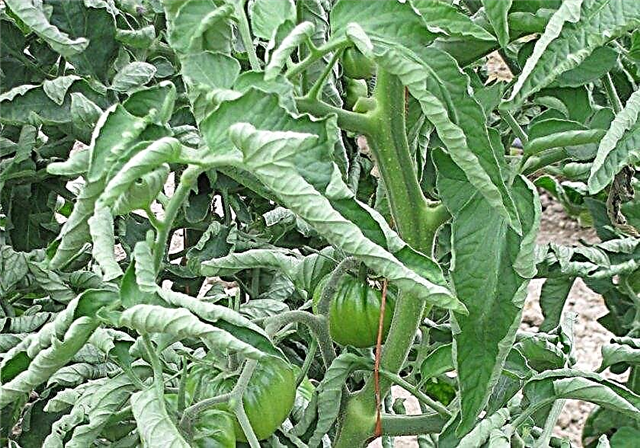
- Excess fertilizer is also contraindicated:
- nitrogen - excessive growth of greenery to the detriment of fruiting;
- potassium and phosphorus - yellowing and wilting of greenery, necrosis;
- calcium - enhanced growth, chlorosis of leaf veins;
- magnesium - twisting and darkening of greenery.
To build green mass, plants need nitrogen. The first top dressing is carried out on the 15th day after planting. To do this, use a solution of mullein diluted with water 1:10, 1 l / m2.
During the formation of flower ovaries and active flowering, two top dressings are carried out with a complex mineral preparation (for example, “Kristalon”). The interval between procedures is 3 weeks.
During the fruiting period, greenhouse tomatoes need only one complex feeding, at the stage of fruit formation. You can apply "Crystal" or "Kemira Universal" (according to the instructions).
Heat
A common cause of twisting leaf plates in tomatoes is a sharp increase in temperature. Especially often this happens in polycarbonate greenhouses, as the material is easily heated.
Heated air in the upper space does not correspond to the soil temperature, which slows down the flow of moisture and nutrition into the foliage; it turns yellow and curls up with a straw. The temperature is lowered by opening the windows and doors. The optimum temperature for growing the culture is + 22 ° C- + 25 ° C.
Root damage
Damage to the roots of tomatoes can cause a problem when loosening the soil, so the procedure must be carried out extremely carefully, loosening the soil not very deep.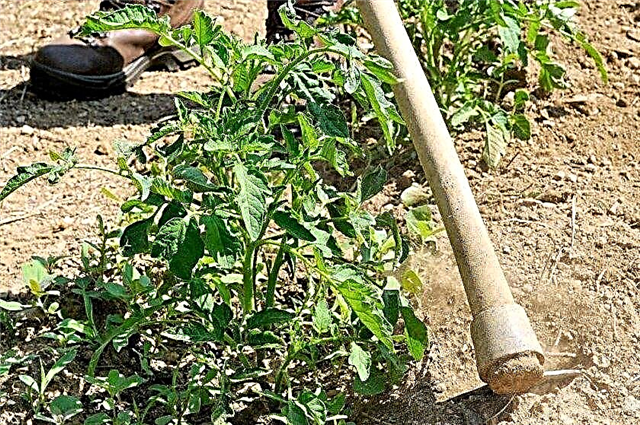
There may be other reasons:
- breaking roots during planting;
- unheated hardening of seedlings;
- an excess of aggressive organic fertilizers for the crop (fresh manure);
- root rot infection;
- the formation of a dense crust on the surface of the soil, preventing the penetration of air.
Fix the problem depending on the cause:
- When planting, the roots need to be carefully straightened.
- Seedlings must be hardened within 12-14 days.
- Fresh bird droppings and manure are not used as fertilizer for tomatoes.
- A crust on the surface is formed when watering from a hose, you need to organize the correct watering (under the root, drip), carry out regular loosening.
- Root rot is treated with fungicides (colloidal sulfur, Fundazole).
Incorrect bush formation
In order not to thicken the planting, tomato bushes are formed in 1-2 trunks. To do this, thinner side shoots are removed. If the procedure is not carried out correctly, the plant can be wounded. Damaged areas are open for infection, which leads to wilting of the plant.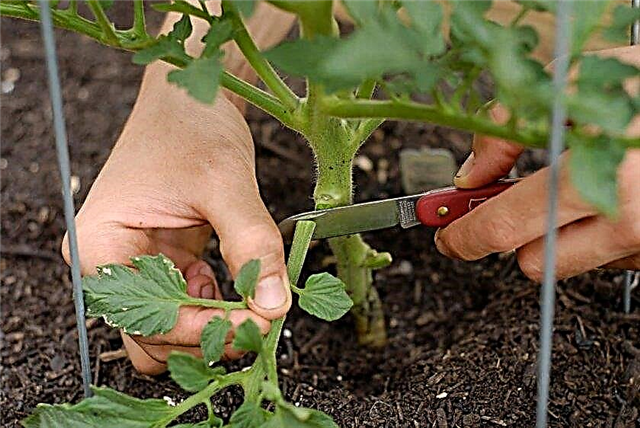
To avoid this, shoots are removed with sterile clippers, not manually. It is advisable to leave a small stump that is processed with crushed coal. The procedure is carried out on a dry sunny day in the morning. So the wounds will heal faster.
Experienced gardeners remove the shoots, cutting off with their hands, but not up, otherwise you can pull the skin of the stem. Break off sharply to the side.
Important! In tall varieties, the procedure for pinching the top of the head is mandatory. This allows you to improve nutrition and reduce the ripening period of the fruit.
Diseases
Pathogens can hide in the soil, in seeds, and can be introduced by insects. Diseases lead to reduced yields, some of them are incurable.
Bacterial cancer
The cause of the disease is bacteria that enter the plant through microscopic lesions. Gradually, these bacteria spread throughout all tissues, leading to death. An ideal environment for the development of microbes is considered a temperature of + 25 ° C.
Symptoms of the disease manifest everywhere. Foliage changes color to a red tint, withers. If you cut the stem along, you can see dark stripes, infected vessels.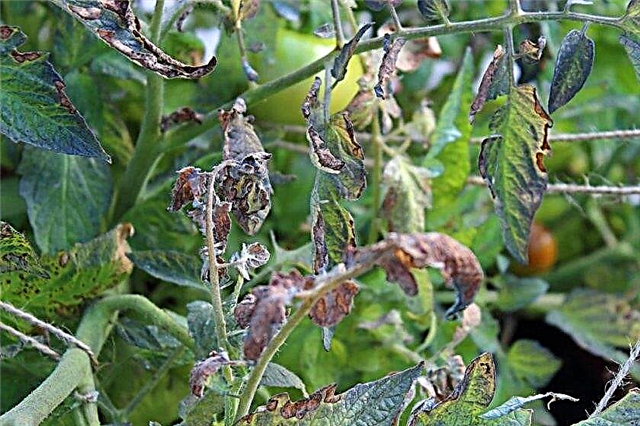
There is no cure for bacterial cancer. The infected bush is removed and burned.
Preventive measures can be taken from the earliest stages of cultivation:
- Dress seeds in brine for 15 minutes.
- Spray the seedlings in the phase of three leaves with Fitolavin (2%).
- Disinfect the soil in the greenhouse using the Carbation agent, diluting it with water in a proportion of 250 ml / 10 l.
Mosaic Tomato
Mosaic is a viral infection.
There are several reasons for the development of the disease:
- lack of light:
- non-compliance with the norms of feeding;
- increased humidity of air and soil;
- poor ventilation.
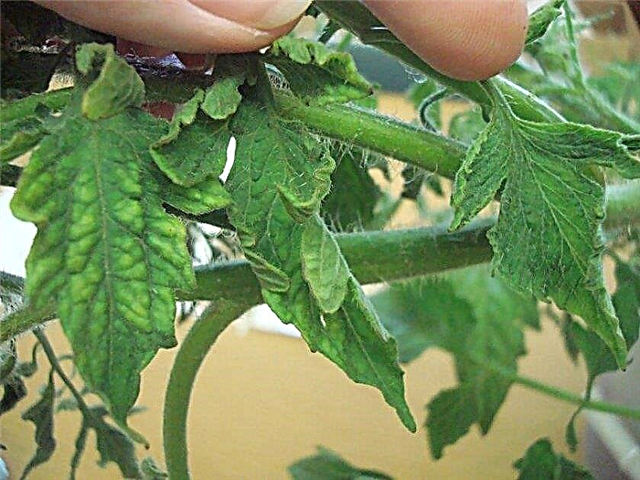
Mosaic is not treated, infected specimens must be dug up, and the soil treated with a solution of potassium permanganate or copper sulfate.
You can prevent the disease in several ways:
- Disinfect planting material and soil.
- Observe the dosage of the fertilizer.
- Provide ventilation and lighting.
- After each procedure, disinfect garden tools.
Did you know? If, as a result of unsuccessful hair coloring, they turn green, the mask of tomatoes will help to fix the situation.
Fusarium
Fungi - the causative agents of Fusarium - live in soil, seeds and gardener's tools. The danger is that the symptoms appear only at the stage of flowering or the formation of the fruit. There is a high probability of infection through wounds remaining after a cliff of the lower leaves.
Signs of fusarium appear on foliage and stems. Leaf plates turn yellow and dry, vessels in the middle of the shoots become dark brown in color. At the first symptoms for treatment, it is necessary to introduce the powder biological preparation Trichodermin into the soil, 1 kg / 10 m2.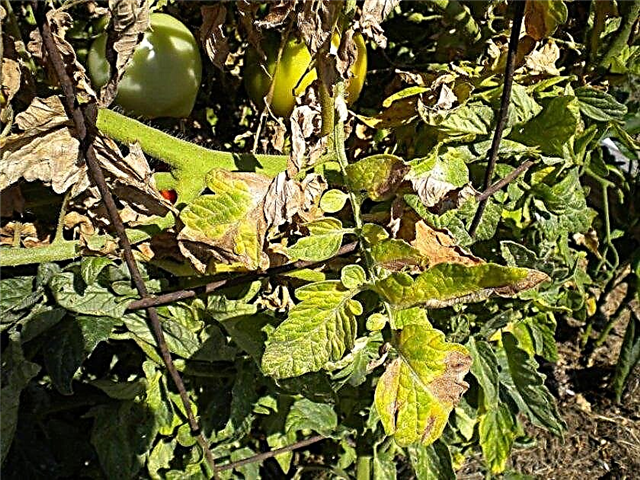
The main preventive measure is the observance of crop rotation. There are other preventive actions:
- Keeping distance when planting plants in the soil.
- Cleaning the beds after the previous harvest.
- Seed and soil dressing.
- Strict adherence to nitrogen fertilizer.
- Processing after planting with Planriz (according to the instructions).
Verticillus wilting
The infection spreads through contaminated soil and seeds. Penetrating through the roots, the disease makes its way to the very tops of the stems, leading to vascular necrosis. Then the leaves and root shoots begin to die.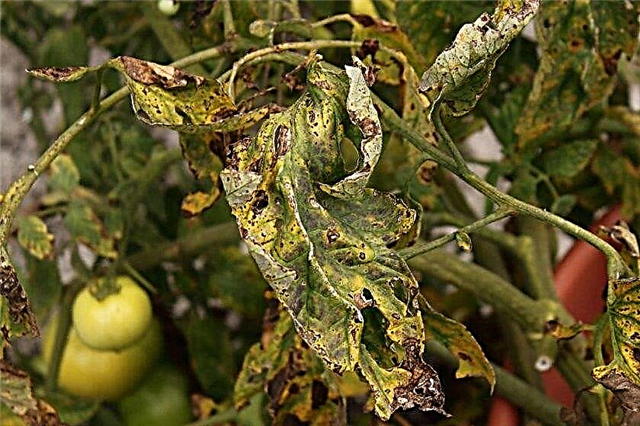
The disease is not treated: there were samples of the use of fungicides from the benzimidazole group (Benomila, Fuberidazole), but to no avail. The infected bushes need to be dug up and disposed of, and the soil in the beds should be sanitized.
Another effective preventive measure is soil remediation. At the place of growing tomatoes at the end of summer, green manure is planted. Before winter, the land is plowed, leaving them to rot in the ground. The peculiarity of such plants is that when they rot in the soil, they form saprophytic microorganisms that destroy the harmful microflora.
Pests
Parasitic insects cause significant damage, damaging the tissue of tomatoes, which opens up access to pathogenic microorganisms. Some insects are carriers of various infections.
Aphid
A microscopic parasite up to 3 mm in size forms entire colonies on tomato bushes. The insect loves a humid environment and high temperature. Aphids suck juices from the ground parts of the bush. It is also dangerous in that it transfers a soot fungus and a mosaic pathogen.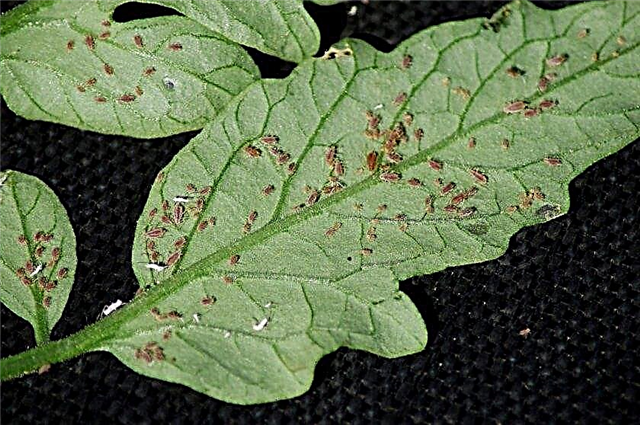
Vital activity of aphids leads to the following consequences:
- withering and twisting of foliage;
- drying of shoots;
- death of ovaries.
Treatment of tomatoes is carried out comprehensively, depending on the stage of the lesion:
- Too affected parts of the plant are removed.
- A large accumulation of aphids is washed off with a jet of water or removed manually.
- Spray with a solution of laundry soap (2 tbsp. L / 1 l of water).
- It is treated with infusions of grass repellents (wormwood, garlic).
- Powdered with tobacco powder.
- Apply treatment with chemicals (suitable "Aktara", "Karbofos").
Important! Spraying should be done in the evening. After rain, the treatment is repeated.
Whitefly
This small white fly inhabits the bushes, and leaves its offspring in the form of larvae. The cat carries a sooty fungus on the tomatoes, covering the parts of the plant with black coating. The fly and its offspring feed on the pulp of foliage.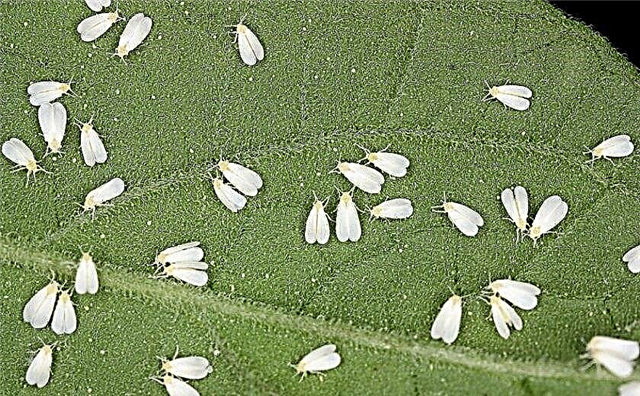
You can detect signs of an insect by twisted boat, edges up, leaf plates. With timely detection, the planting is sprayed with garlic infusion, with a neglected state, insecticides are used (for example, Confidor).
Spider mite
Arachnid insect size of 1-2 mm prefers a dry environment. The parasite feeds on leaf cells.
They are difficult to detect immediately, since they settle on the inner side of the plate, after a while moving to the upper side. The presence of a tick gives out light dotted spots on the leaf and cobweb.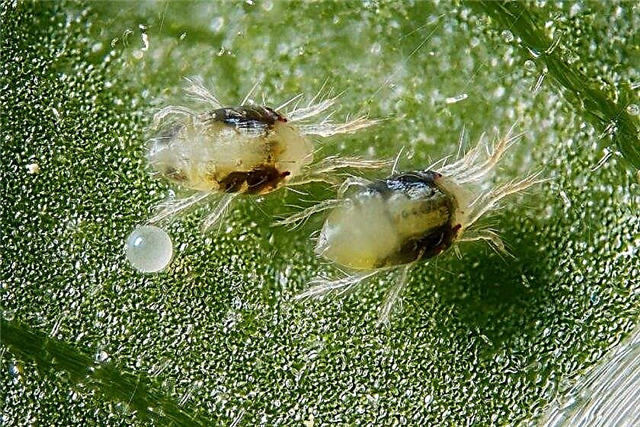
You can fight with a cobweb using spraying. Vermitek, Fitoverm insecticides are suitable. With a small settlement, the pest is sprayed with soapy water.
Preventive measures
Prevention is the key to plant health, high yield and excellent fruit quality.
The procedure consists of a set of actions:
- After harvesting, the soil is cleaned of plant debris. They do this when the night temperature has already dropped so that the spores and larvae freeze out.
- For active growth and development, you need to select the optimal soil composition, to disinfect it.
- If necessary, the top layer on the beds is replaced with a new one.
- Seeds are etched in any disinfectant solution (potassium permanganate, aloe juice).
- Sprouted seedlings dive into large containers, which will give impetus to the development of roots.
- Hardening will prepare plants for temperature changes and rapid adaptation.
- Do not plant the crop a second time in one garden, as well as after other nightshade.
- Disinfection of all surfaces of the greenhouse.
- When planting, the depth of the hole should take into account the length of the roots, the roots need to be straightened.
- In the greenhouse, it is necessary to monitor the temperature and humidity conditions.
- Avoid stagnation or waterlogging of air.
- Observe the norms of watering and fertilizers (if there is no experience, it is better to buy fertilizer complexes with detailed instructions).
- Loosen the soil, weed, removing weeds.
- To carry out preventive spraying at all stages of the growing season, except for the period of flowering and fruiting.




